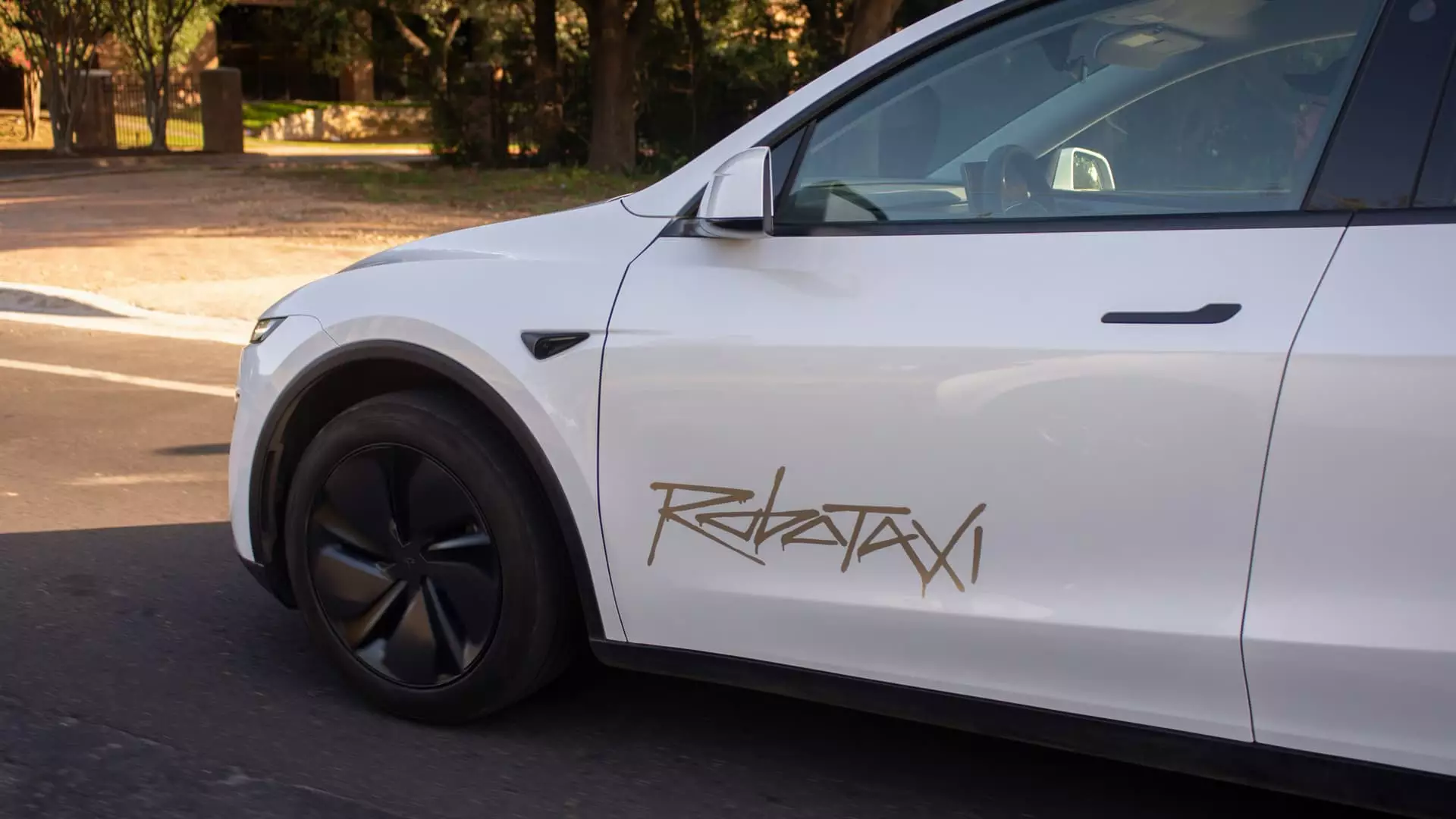This past weekend marked a pivotal moment in the electric vehicle (EV) industry, with Tesla unveiling its much-anticipated Model Y robotaxi in Austin, Texas. The spectacle of the launch was more than just a new service; it was a celebration of a decade’s worth of relentless ambition and technological innovation led by Elon Musk and his team. The immediate aftermath saw Tesla’s stock surge by a formidable 10%, a tangible testament to investor enthusiasm. However, a deeper examination raises some pertinent questions about the implications of this leap into autonomous travel.
The launch’s exclusivity—accessible initially only to a select group of die-hard fans and shareholders—paints a rather peculiar picture. On one hand, it reflects a community dedicated to the advancement of technology and innovation; on the other, it feels as though Tesla is handpicking advocates to create a halo effect around the new service. Charging customers a quirky fee of $4.20 per ride seems to be more of a marketing gimmick than a serious pricing strategy, reminiscent of Tesla’s playful yet strategic branding.
Promised vs. Delivered: The Reality Check
Elon Musk is no stranger to high-stakes promises. For years, he has hinted at Tesla becoming the kingpin of the autonomous driving landscape. With claims of deploying “hundreds of thousands, if not over a million” self-driving cars by next year, the ambition is palpable, yet the reality is dramatically nuanced. While one passenger reported a flawless experience during multiple rides, this singular success story is dwarfed by reports of erratic behavior on the roads; robotaxis reportedly violated traffic laws and made erratic stops, creating a contentious environment of skepticism and concern among users and onlookers alike.
When joyous tweets from Musk revel in the success of this soft launch, they clash sharply with reports of Tesla’s robotaxis breaching basic traffic rules. Street observers caught a Model Y travelling the wrong way, illuminating the surreal dissonance between Tesla’s presentation and the troubling practicalities of its technology. It’s reminiscent of a high-tech carnival ride that dazzles spectators, only to later reveal its dangerous edge.
Facing the Competition: A Growing Pressure
Tesla’s urgency to claim its stake in the autonomous vehicle market seems ever more desperate as it faces a slew of competitive threats. Once regarded as the definitive leader of self-driving innovation, the reality today is stark; rivals like Alphabet’s Waymo are not just ahead in terms of operational efficiency but are also setting a precedent for safe and effective autonomous transportation. With Waymo clocking in over 250,000 commercial rides per week, and competitors like Baidu and WeRide encroaching on Tesla’s territory, the race is fraught with tension.
While Tesla parades its advances, the underlying sense of impending competition looms large. The negative experiences shared by early adopters and the rollout hesitations observed during this launch could have broader implications for public trust in autonomous tech. An environment where public safety takes a back seat to technological ambition is troubling at best and catastrophic at worst.
Political and Public Safety Concerns
Compounding these concerns is the growing pushback from lawmakers and public safety advocates urging Tesla to take a step back. As the technology ventures into uncharted territory, the urgency and fervor surrounding its rollout need to be tempered with caution. This reflects a broader need for a responsible regulatory framework that addresses the implications of autonomous driving technology on public safety.
The paradox becomes evident: Tesla’s dream of revolutionizing transportation through automation could spiral into a nightmare if the potential risks are not adequately examined and addressed. While some may see the launch as a groundbreaking moment for humanity, others rightly perceive it as a reckless gamble that prioritizes corporate gain over consumer safety.
In a time when new technologies hold the power to reshape our landscapes, it’s crucial to balance innovation with responsibility. Tesla stands at a crossroads: the allure of being first must be tempered with a commitment to safe practices and a true understanding of what it means to drive the future. As we watch the next chapter of this technology unfold, one can only hope that in its quest for leadership, Tesla remains mindful of the responsibility it bears to the public—and the roads on which we all share.


Leave a Reply